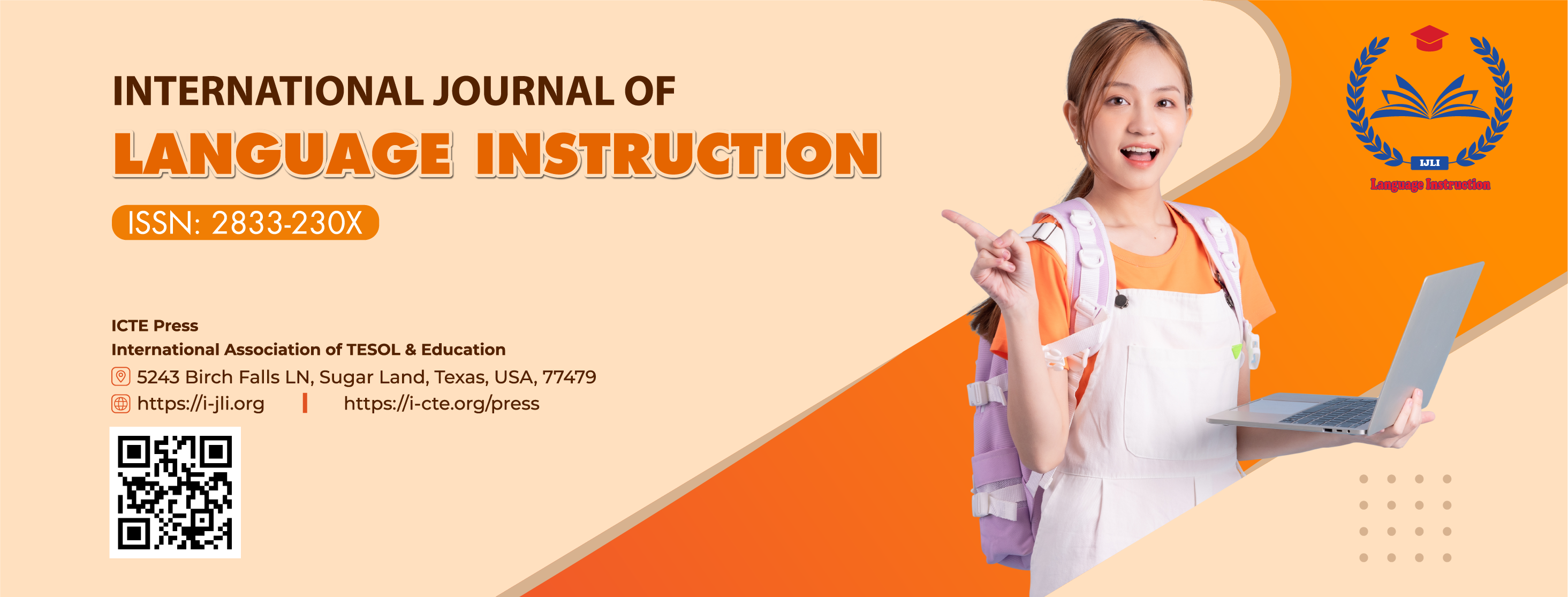Language education is an ever-evolving field of study, with new research and findings being released on a regular basis. The latest findings from research in language education have revealed a number of interesting insights into the way language is taught and learned. These findings have implications for both language teachers and learners, as they provide valuable information on how to best approach language learning. This article will provide an overview of the latest findings from research in language education, including the importance of using technology in language learning, the benefits of using authentic materials, and the importance of providing feedback to learners.
Exploring the Impact of Technology on Language Education: A Review of Recent Research
The use of technology in language education has been a topic of increasing interest in recent years. This review examines recent research on the impact of technology on language education, with a focus on the potential benefits and drawbacks of technology-based language learning.
The research reviewed suggests that technology can be a powerful tool for language learning, providing learners with access to a wide range of resources and activities. Technology can also facilitate collaboration and communication between learners, allowing them to interact with each other and with native speakers. Technology can also provide learners with feedback and support, allowing them to track their progress and receive personalized instruction.
However, the research also suggests that technology can have some drawbacks. For example, technology can be expensive and difficult to use, and it can be difficult to ensure that learners are using the technology effectively. Additionally, technology can be distracting, and it can be difficult to ensure that learners are focusing on the language learning task at hand.
Overall, the research suggests that technology can be a powerful tool for language learning, but that it is important to ensure that learners are using the technology effectively and that the technology is not distracting them from the language learning task. It is also important to ensure that the technology is accessible and affordable for all learners.
Examining the Role of Culture in Language Education: Insights from Recent Studies
Recent studies have shed light on the role of culture in language education, providing insights into how culture can be used to enhance language learning. This paper will examine the findings of these studies, exploring how culture can be used to improve language education.
First, it is important to understand the concept of culture in language education. Culture is defined as the shared beliefs, values, and practices of a particular group of people. It is a complex concept that encompasses a wide range of elements, including language, customs, beliefs, values, and norms. In language education, culture is used to provide context and meaning to language learning. It can be used to help learners understand the language they are learning, as well as to provide a cultural context for the language.
Recent studies have explored the role of culture in language education. One study found that incorporating cultural elements into language instruction can help learners better understand the language they are learning. The study found that when learners are exposed to cultural elements, such as stories, songs, and other cultural artifacts, they are more likely to understand the language and be able to use it in meaningful ways.
Another study found that incorporating cultural elements into language instruction can help learners develop a deeper understanding of the language. The study found that when learners are exposed to cultural elements, such as stories, songs, and other cultural artifacts, they are more likely to develop a deeper understanding of the language and be able to use it in meaningful ways.
Finally, a third study found that incorporating cultural elements into language instruction can help learners develop a sense of identity and belonging. The study found that when learners are exposed to cultural elements, such as stories, songs, and other cultural artifacts, they are more likely to develop a sense of identity and belonging to the language they are learning.
In conclusion, recent studies have provided insights into the role of culture in language education. These studies have found that incorporating cultural elements into language instruction can help learners better understand the language they are learning, develop a deeper understanding of the language, and develop a sense of identity and belonging to the language. As such, culture can be used to enhance language learning and should be incorporated into language instruction.
Investigating the Benefits of Bilingualism in Language Education: Latest Findings
The study of bilingualism has been a topic of great interest in the field of language education for many years. Recent research has revealed a number of benefits associated with bilingualism, which can be applied to language education. This article will discuss the latest findings on the benefits of bilingualism in language education, and how these findings can be used to inform language teaching practices.
One of the most significant benefits of bilingualism is improved cognitive functioning. Studies have shown that bilingual individuals have better executive functioning skills, such as working memory, task switching, and problem solving. These skills are essential for language learning, as they allow learners to process and retain new information more effectively. Additionally, bilingualism has been linked to improved academic performance, as bilingual students tend to have higher grades and test scores than their monolingual peers.
Another benefit of bilingualism is increased cultural awareness. Bilingual individuals are more likely to be exposed to different cultures and languages, which can help them to better understand and appreciate different cultures. This can be beneficial in language education, as it can help learners to better understand the cultural context of the language they are learning.
Finally, bilingualism can also help to improve language learning. Studies have shown that bilingual individuals are better able to learn new languages, as they are able to draw on their existing knowledge of two languages to better understand the new language. This can be especially beneficial for language learners, as it can help them to learn new languages more quickly and effectively.
Overall, the latest research on the benefits of bilingualism in language education has revealed a number of positive outcomes. Bilingualism can improve cognitive functioning, increase cultural awareness, and facilitate language learning. These findings can be used to inform language teaching practices, and help language learners to achieve their goals more effectively.
Exploring the Benefits of Immersion Programs in Language Education: Recent Research
Immersion programs in language education have become increasingly popular in recent years, as they offer a unique opportunity for students to gain a deeper understanding of a language and its culture. This paper will explore the benefits of immersion programs in language education, as well as recent research on the topic.
Immersion programs provide students with an immersive experience in a language and its culture, allowing them to gain a more comprehensive understanding of the language. Immersion programs can be conducted in a variety of ways, such as through homestays, language camps, and study abroad programs. These programs offer a unique opportunity for students to gain a deeper understanding of a language and its culture, as they are immersed in the language and culture on a daily basis.
Recent research has shown that immersion programs can have a positive impact on language learning. Studies have found that immersion programs can lead to improved language proficiency, increased motivation, and better cultural understanding. Immersion programs can also help to improve students’ confidence in their language abilities, as they are able to practice the language in a real-world setting. Additionally, immersion programs can help to foster a sense of global citizenship, as students are exposed to different cultures and perspectives.
Overall, immersion programs in language education offer a unique opportunity for students to gain a deeper understanding of a language and its culture. Recent research has shown that immersion programs can have a positive impact on language learning, leading to improved language proficiency, increased motivation, and better cultural understanding. As such, immersion programs can be an effective tool for language education.
Assessing the Effectiveness of Online Language Learning: Latest Research Findings
The use of online language learning has become increasingly popular in recent years, with many learners turning to digital platforms to supplement their language learning. As such, it is important to assess the effectiveness of online language learning in order to determine its efficacy as a learning tool. This paper will review the latest research findings on the effectiveness of online language learning, with a focus on the advantages and disadvantages of this approach.
The primary advantage of online language learning is its convenience. Learners can access language learning materials from any location, at any time, and can tailor their learning to their own individual needs and preferences. Additionally, online language learning can be more cost-effective than traditional language learning methods, as learners can access materials without having to pay for physical textbooks or attend expensive classes.
However, there are also some drawbacks to online language learning. For example, learners may find it difficult to stay motivated and engaged when learning online, as there is no face-to-face interaction with a teacher or other learners. Additionally, online language learning can be less effective for learners who require more structure and guidance in their learning.
Recent research has also highlighted the importance of using a variety of learning materials and activities when learning a language online. Studies have found that learners who use a combination of audio, video, and written materials, as well as interactive activities, are more likely to make progress in their language learning. Additionally, research has shown that learners who use online language learning tools in conjunction with traditional language learning methods, such as attending classes or speaking with native speakers, are more likely to make faster progress.
In conclusion, online language learning can be an effective tool for language learners, provided that they use a variety of materials and activities, and supplement their online learning with traditional language learning methods. However, it is important to note that online language learning may not be suitable for all learners, as some may require more structure and guidance than can be provided by online learning tools.
Conclusion
The latest findings from research in language education have shown that language learning is a complex process that requires a variety of approaches and strategies. It is clear that the most effective language learning strategies involve a combination of both explicit and implicit instruction, as well as a focus on both form and meaning. Furthermore, the use of technology and multimedia can be beneficial in language learning, as it can provide learners with more opportunities to interact with the language and practice their skills. Finally, it is important to remember that language learning is a lifelong process, and that learners should be encouraged to continue to develop their language skills throughout their lives.
Do you want to ask a question or discuss this topic?
[wpaicg_chatgpt]



